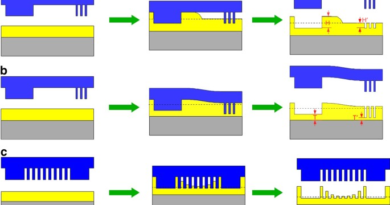3-nm Race to Start in Semiconductor Industry with Chip for Apple iPhone 15 – BusinessKorea
On June 30, 2022, Samsung Electronics became the first company in the world to start volume production of chips via a 3-nm foundry procedure.
The 3-nanometer era is expected to create a big change in the semiconductor market over the next decade. The 3-nm era will bloom in earnest with 3-nm chips powering major information devices including smartphones. Accordingly, cooperation and partnership for 3-nm supremacy have begun among major foundry service providers such as Taiwan’s TSMC and Samsung Electronics, fabless companies and information technology (IT) players.
On Aug. 8 (local time), Bloomberg reported that Apple has begun testing the M3 Max, a new powerful chip. The M3 Max, which will go into the new MacBook Pro model to be launched in October, is a semiconductor like the brain of an IT device.
Apple has been putting its own chips in all of its smartphones and computers since 2020, when it debuted its own Apple silicon. While Apple designed the chip, all production is done via TSMC’s N3 (3-nm) process. The line width of a circuit is based on nanometers. The finer a production process is, the more efficient production becomes and the more powerful semiconductors can be produced. The performance and efficiency of semiconductors jump dramatically when chipmakers begin the 3-nm process. Samsung says its 3-nm chips offer a 23 percent increase in performance and a 45 percent reduction in power consumption compared to 5-nm chips.
The iPhone 15 series, which will be unwrapped in September, will feature the A17 bionic chip made via TSMC’s 3-nm process. This will mark the first time a semiconductor made via a 3-nm process has been applied to a consumer product. In general, mobile application processors (APs) are the first to be made via the most advanced process.
“At least by 2030, 3-nm processes will be the mainstream process for foundry companies,” said a semiconductor industry insider. “If a chipmaker loses in this race, it will be hard to make a comeback in the future.” Chipmakers have to decisively win the 3-nm process game before reaching 2-nm processes, as 2-nm technology is considered a physical limit in micro-fabrication processes.
These 3-nm chips are expected to roll out via mass production lines beginning in the second half of this year. They will start with mobile APs, followed by high-performance computing (HPC) chips, artificial intelligence (AI) chips, and automotive semiconductors. Their market size is expected to explode. The 3-nm foundry market, which was valued at US$1.2 billion in 2022, is expected to grow more than 20 times to US$24.2 billion in 2026.
Competition between TSMC and Samsung has also intensified. Apple has a virtual monopoly on TSMC’s 3-㎚ processes for new products. Samsung’s foundry is doing everything it can do in order to attract major fabless companies such as Nvidia and Qualcomm. The Korean tech giant became the world’s first to mass-produce 3-nm chips in 2022, but its main focus remains on 4-nm chips. Intel said it will start making chips using a 3-nm process in 2024.
Samsung is one step ahead of TSMC in all 3-nm processes by having introduced the gate-all-around (GAA) method. TSMC, on the other hand, is still using the fin field-effect transistor (FinFET) process at 3 nanometers. Its strategy is to apply the GAA process to 2-nm chips beginning from 2025.
For Samsung, in particular, a 3-nm process is a chance for its foundry division to catch up to TSMC. Its System LSI Division is looking to redeem itself via a 3-nm process. Samsung is reportedly working on the Exynos 2500, Samsung’s first mobile AP using a 3-nm process, with the goal of starting volume production by the end of 2024. If the 3-nm Exynos of Samsung’s own design performs well, major fabless players will likely turn their eyes back to Samsung.
TSMC will keep its customers by introducing an upgraded version of a 3-nm process starting from next year. It will reportedly focus on delivering improved performance compared to chips made through the existing process at a relatively low price.
Yield competition really matters, too. TSMC said in 2022 that its 3-nm yield was in the 80 percent range. Industry insiders estimate TSMC’s 3-nm yield at 60 to 80 percent. Samsung Electronics has also recently achieved yields in the 60 percent range and its process is said to be stabilizing.
“As important as yields is the performance of actual 3 ㎚ chips produced,” said Park Jae-keun, a professor at Hanyang University’s Department of Convergence and Electronics Engineering. “Samsung has more problems to solve because it applied the GAA process ahead of another, but it has to have perseverance in the long run.”
Never miss another article! Enter your email address below to receive our free daily newsletter:


